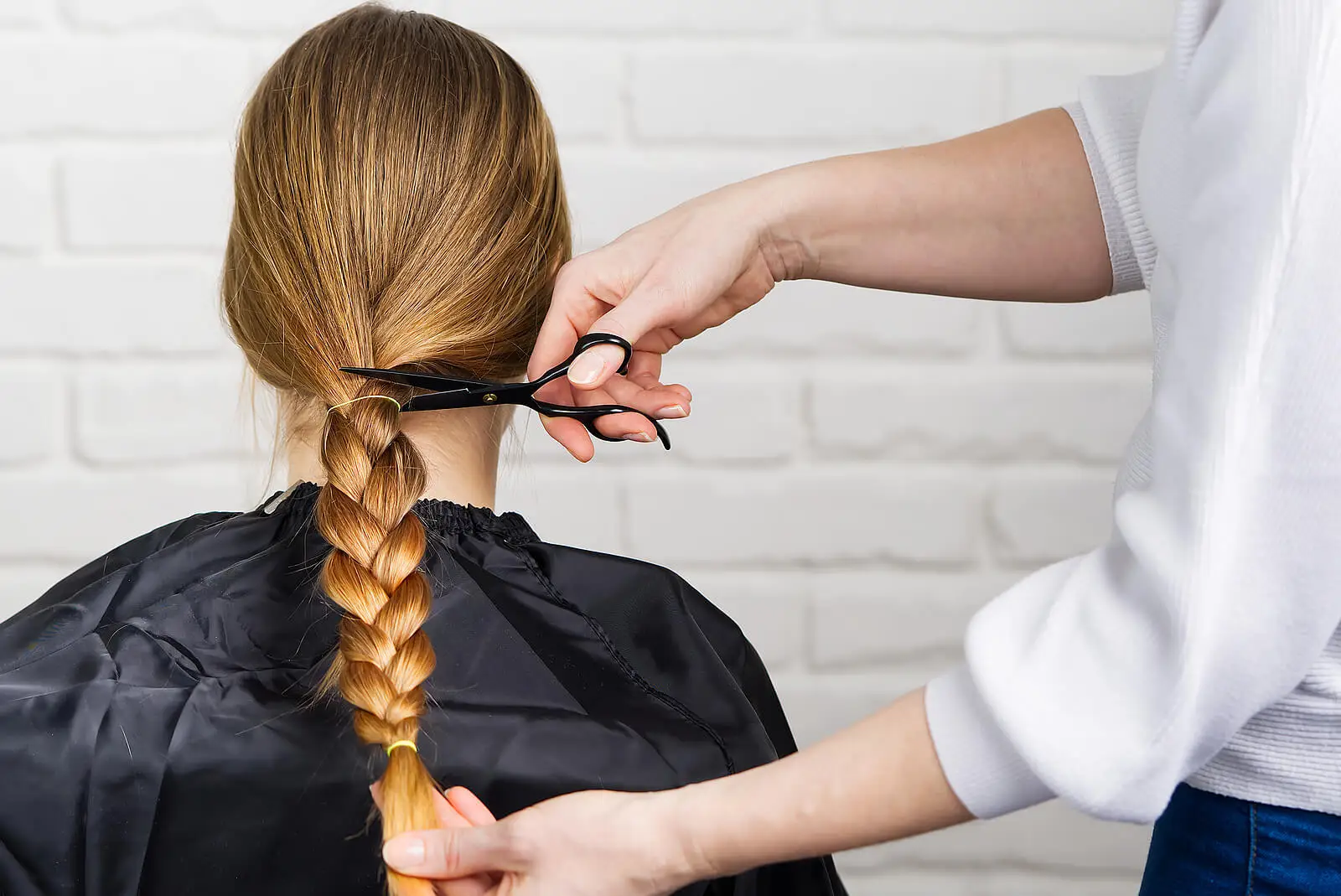Everything You Need to Know Before Donating Your Hair


Reviewed and approved by the nurse Leidy Mora Molina
When you decide to donate your hair, you’re helping women and girls who have had to go through the devastating experience of losing their hair. And it’s simple; just follow the requirements set by organizations that offer free or low-cost wigs to those battling diseases such as cancer.
As a publication from the American Society of Clinical Oncology (ASCO) states, a wig can give strength, hope, and self-confidence to those struggling with the emotional challenges of losing their hair to disease. Now, what do you need to keep in mind to be a donor? Let’s take a look.
Why donate your hair?
Suffering from an illness such as cancer can greatly affect a person’s self-esteem. Add to the aggressive treatments are side effects such as hair loss, and it’s normal for patients to feel uncomfortable with their bodies.
However, cultivating the self-esteem of these people is of utmost importance. In fact, there’s scientific evidence that highlights the importance of assisting cancer patients with actions and strategies to cope with their physical and psychosocial condition.
This is because a good self-perception makes them feel secure and allows them to have positive thoughts to overcome the challenges imposed by their disease.
Many women and girls must go through this difficult situation. Therefore, donating your hair to an organization that is dedicated to making and delivering free or low-cost wigs can put a smile back on their face and, of course, motivate them in this arduous struggle.

We think you may also enjoy reading this article: Check Out These 12 Types of Hair Spray and How to Use Them
Hair donation requirements
Neither age nor gender is relevant when it comes to donating hair. The hair will be received by the organizations, as long as it meets the following requirements:
- It must be healthy. If you’re going to donate, make sure the hair is not damaged by dyeing, perming or chemical straightening. Also, keep in mind that although colored hair is acceptable (as long as it’s healthy), bleached hair is not acceptable.
- It cannot be dirty or wet. Hair must be delivered clean and dry to the associations. Otherwise, it cannot be used.
- The gray hair must not exceed 5%. This requirement is due to the fact that gray hair could complicate the process of treating and coloring the hair.
- It must be at least 30 centimeters (about 15 inches) long. This is the minimum length the hair should be. However, if your child is under 14 years of age, the minimum length drops to 20 centimeters.
- The strands should be cut at the same height and direction. For this, it may be necessary to collect it in braids or pigtails.
Where can you donate your hair?
If you’re determined to donate and meet the requirements, the next step is to find an organization that’s dedicated to the cause. There is often a great variety. Let’s take a look at some possible examples in detail.
- Cancer organizations. In their mission to support and accompany patients and families, many cancer organization has a program to collect hair for the manufacture of oncological wigs. The locks can often be delivered to their headquarters or other affiliated points. In some cases, they also accept them by mail. Search online to determine if this is possible for you.
- Nonprofit organizations dedicated to hair collection. Certain non-profit organizations specifically make natural hair wigs for people undergoing treatments such as chemotherapy. These organizations also often stand out for holding solidarity hairdressing events, in addition to receiving hair by mail.
- Other social projects. Other projects and organizations where you can donate your hair will vary. Bearing this in mind, all you need to do is some research to discover what’s nearest to you or if there are any other social projects or organizations where you can send your hair.
How to cut and donate your hair yourself
So, you’re almost ready to cut and send your hair to become a beautiful cancer wig. Here’s how to do it:
- Start by washing and drying your hair. Keep in mind that it’s not recommended to use styling products. You must wait until the hair dries before you can cut it.
- Secure the hair in a ponytail or braid. Use a band for both ends.
- Cut over the top band.
- Place the ponytail you’ve cut into a closed bag.
- Deliver or mail it to the association of your choice.
Now, if you feel more confident in the hands of a professional, remember that you can also visit one of the solidarity hairdressers affiliated with any of the organizations in charge of making the wigs.

Like this article? You may also like to read: 13 Makeup and Hairstyle Tricks to Save Time in the Mornings
Donate is helping
If one day you wake up feeling like cutting the hair you let grow for so long, don’t let it get lost on the salon floors. Donate it and put a smile on the face of someone who is going through a difficult time.
Finally, k eep in mind that if you’re a hairdresser, you can also help by becoming a hairdresser who collaborates by donating hair.
All cited sources were thoroughly reviewed by our team to ensure their quality, reliability, currency, and validity. The bibliography of this article was considered reliable and of academic or scientific accuracy.
- Hibbs, S. (2018). How to Donate Your Hair to Help People With Cancer. American Society of Clinical Oncology (ASCO). Available in https://www.cancer.net/blog/2018-04/how-donate-your-hair-help-people-with-cancer
- Leite, M. A., Nogueira, D. A., & Terra, F. (2015). Evaluation of self-esteem in cancer patients undergoing chemotherapy treatment. Revista latino-americana de enfermagem, 23(6), 1082–1089. https://doi.org/10.1590/0104-1169.0575.2652
- Dua P, Heiland MF, Kracen AC, Deshields TL. Cancer-related hair loss: a selective review of the alopecia research literature. Psychooncology. 2017 Apr;26(4):438-443. doi: 10.1002/pon.4039. Epub 2015 Nov 23. PMID: 26594010.
This text is provided for informational purposes only and does not replace consultation with a professional. If in doubt, consult your specialist.








